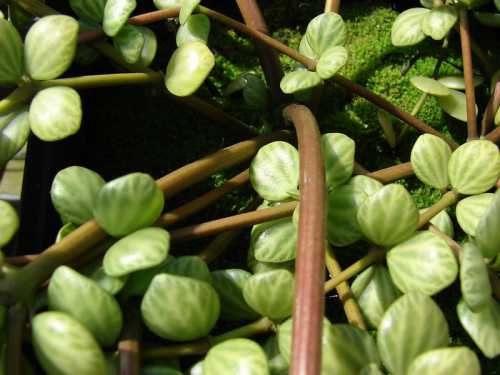If you have a backyard or are fond of creating a house garden, then you must have definitely heard of the peperomia plant. Chances are, you might be thinking of growing these plants by yourself, or even better, you have already started with the process.
As appealing as it sounds, growing beautiful peperomia leaves require much more assistance than it requires growing any other plant. Over time, you might also be presented with the problem of peperomia leaves turning black or peperomia leaves turning brown.
But don’t worry, we have got you covered! In the following article we discuss everything about peperomia leaves, how to grow and take proper care of them, while putting special emphasis on the lush green leaves turning black or brown. Without any further ado, let’s get started!
Why Are My Peperomia Leaves Turning Black or Brown?

Overwatering or Underwatering
Overwatering or underwatering can lead to the leaves of the Peperomia plant to turn black or brown. It is important to know the appropriate water requirements of your plant before you start watering them. Scroll through to read the solution.
Drainage problem
Too wet soil causes problems to the growth conditions of peperomia plants, thereby having an immediate effect on the colour of their leaves. Root rot is one of the main causes of poor drainage systems.
Also Read: Why are Dracaena Leaves Turning Yellow and Brown?
Fertilization
Over fertilization and using a lot of additives is another common factor that contributes to peperomia leaves turning balck or brown. It may come as a surprise to some people that fertilizing more than the required amount can do more harm than any good, but it is true and we have a solution ready for this.
Humidity and Temperature
If you see your peperomia plant leaves turning black or brown all of a sudden, one cause can be sudden changes in the temperature and humidity levels. Peperomia plants are natives of the tropic region, therefore they expect conditions like light, humidity, and temperature to be replicated wherever they are kept. If they are exposed to winters or a cold weather, they turn brownish or black entirely.
Inappropriate lighting conditions
Bright and indirect light is often the only thing that Peperomia leaves need to survive. They can do well if they receive bright sunlight at all times of the day. However, it is important to note that direct sunlight can have a drastic effect on the health of these plants. They can cause leaf burns, the earliest signs of which re brown leaf edges.
Also Read: Why Prayer Plant Leaves Turning Yellow?
Wrong Potting mixture
The Peperomia plants are very specific about the type of potting mixture they prefer. They cannot do well if they are kept in unhealthy and unclean soil for long. It tends to clog the soil pores, making it hard for excess water to drain. This in turn can cause discolouration of leaves, often visible to us as black or brown peperomia leaves.
Pests and Diseases
Peperomia plants are beautiful and super attractive. As a result, the leaves become vulnerable to pests and other infections. When pests feed on the leaves, they suck the juice, rendering these leaves black or brown. Aphids, thrips, whiteflies, and scale bugs are some of the common pests present on peperomia leaves.
Perpetuating black spots
Witnessing black spots on your peperomia leaves can both be a cause and a consequence of your leaves turning brown or black. Usually, black spots are caused by underlying diseases like Cercospora leaf spot, Phyllosticta leaf spot, or Rhizoctonia leaf spot and can eventually result in the entire leaf to turn black.
Also Read: Why Chinese Money Plant (Pilea) Losing Leaves?
How to Prevent Peperomia Leaves Turning Black or Brown?
The aforementioned causes can be treated if identification is done at the right time. With the right intervention strategies your Peperomia plants can be recovered. Here are all of them:
Accurate watering conditions
Dug your finger into the soil, if the first few inches are dry, water them thoroughly, but if the soil sticks to your finger, keep away from watering for a few weeks atleast.
Providing the right drainage conditions
To improve the drainage conditions of your plant, start by creating pot holes in the container and adding peat moss to your split. This will ensure that the excess water drains off. While it is important for your soil to become moist, it is also important that it supports drainage.
What is the right Fertilization Quantity
First things first, do not take out or buy new fertilizer sprays until and unless you are close to the growth season. Next, to avoid the strong effects of fertilizer sprays, you can dilute them with water and see how your plant responds to water soluble fertilizers. Give your plant some time and witness its response before jumping to conclusions.
Fixing the humidity and temperature
18 to 25 degrees celsius is the ideal temperature to place your Peperomia plants. Neither too hot, nor too cold. The good news is, if you realise your mistake and immediately shift them to warmer places, they can revive and stay healthy ever after. To solve the issue of humidity, you can install a humidifier to keep high humidity levels around your plant.
Also Read: Why Are My Fern Leaves Turning Brown?
Giving the right light
The most desirable option for peperomia plants to receive the ideal lighting conditions is if they are kept at a place that gets neither direct nor too low sunlight. You can find such a place indoors, perhaps near a window. If a window sounds right to you, make sure to place the plant in any direction except South.
Correcting the soil type
You can get the right potting mixture by applying a handful of ways. The first and most simple is to add peat moss to your potting mixture to encourage good drainage facility.
Another method is to repot your plant into a pot that has a healthy bed of potting mixture and promotes growth of the plant. Do not keep the old soil for long, instead keep replacing it with brand new soil every now and then to keep the free and away from pathogens.
Getting rid of the pests
Treating your plant is one thing, cutting them off and getting rid of them is another. In the process of removing pests, you have to combine both these approaches and create one efficient strategy.
If the insects are prevalent on your plant leaves, dip cotton swab in alcohol and gently rub it over the spots. Insecticidal sprays can also be used if the pests have formed a cluster or are hard to remove.
Read this article: Why is My Croton Dropping Leaves?
Treating black spots
It is very easy to identify lack spots on green leaves, and for this reason, it is also very important that you take immediate action after identifying these spots or they may cause havoc on your plant.
To get rid of these spots, it is important to get your hands on products containing chlorothalonil, myclobutanil, or thiophanate-methyl. Next, you have to spray or apply them with cotton on the affected areas. If the spots don’t go away in a couple of days, prune them and destroy them to keep the infection from spreading further.
Peperomia Plant Care Tips
Once you have recovered your peperomia plant leaves back to their normal colour, it is important to take care of them to enable normal functioning. Here are some tips on how you can do so. Moreover, these tips can also help you to keep your peperomia plant safe and healthy in standard time. Let us see what they are:
- Never put your peperomia plant under direct sunlight. Exposing them to direct sunlight causes the leaves to burn, making them brown at the edges, eventually making the effect similar to the entire leaf.
- While direct sunlight is not the right option, an alternative can be to keep them under indirect but bright sunlight. Immediately shifting them to damp and darker conditions can make it difficult for them to adjust and sustain in the longer run. It is important to make the change slowly, one thing at a time. You can start by shifting them indoors but not completely devoiding them of natural light.
- The potting mixture that one chooses for growing peperomia should supplement its nutritional needs and should ensure a proper drainage facility. Regular spotting is also encouraged to complement the drainage needs of the potting mixture.
- Additionally, one can either buy a commercially available orchid potting mixture or mix a handful of vermiculite or peat moss to normal soil.
- Give special attention to the size and material of the container in which you are placing your plant. A container or pot that is too big or too small in size can interfere with the growth of your peperomia plant. Often with a pot that is reduced in size stunts the growth of the roots and thereby the plant.
- In addition, if you transplant your houseplants, stop doing that as the peperomia plants do not like it at all, and might even backfire by giving less or no growth.
- Peperomia plants, just like any other plant, require a sufficient amount of water to grow, but the amount needs to be identified by you prior to waiting for them. Overwatering peperomia plants can be hazardous for them, causing root rot, and even their death. Keep a gap of a week or two before watering your plants thoroughly, or touch the surface of the soil to get a clearer picture.
- Do not expose them to extremely windy or cold temperatures in one go. It is not appreciated in the case of peperomia plants. They are natives of the tropic region and always seek out humid and warm conditions to not only survive, but thrive.
- If the leaves of your peperomia plants start turning yellow, it is an early indication that they are not placed in the right temperature or humid conditions.
- When you are spraying your peperomia plants with a fungicide, make sure to keep the nozzle of the tank very close to the ground. It ensures that the fungicide spray passes through the soil easily and cures the problem of root rot.
Remember that this method only works if root rot is caused by the presence of a fungus. In cases of overwatering, fungicide will not be of any use.
Conclusion
Given all the causes, solutions, and additional tips, it is very obvious that the Peperomia leaves are one of the easiest houseplants to grow. They do not present with special problems, and even if they do, it is rare and can be treated immediately. The care and solution tips are very similar to those of your regular houseplants, so you don’t really have to go an extra mile to make things work with Peperomia plants.
If you are still worried about the black and brown colour of the Peperomia leaves, you can either try the solutions one by one, or in an integrated manner to know what suits your plant the best. Remember, do not initiate experiments on your plant and remain patient for the results. Happy gardening!
